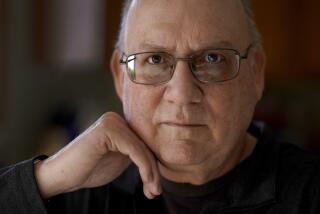Shorter Stay in Hospital Envisioned for Heart Patients
- Share via
Some carefully selected patients with uncomplicated heart attacks may be able to safely leave the hospital after three days, about one-third the normal hospital stay for such patients, University of Michigan researchers reported today in the New England Journal of Medicine.
The study of 80 patients, if confirmed at other medical centers, may decrease medical costs by accelerating an ongoing trend toward earlier discharge of heart attack patients, whose average stay has dropped from 21 days in 1970 to nine days in 1987.
Publication of the new findings was accompanied by a strong warning from a New England Journal deputy editor that early-discharge patients must have truly uncomplicated cases and receive comprehensive follow-up care.
An estimated 15% to 30% of the 750,000 heart attack patients hospitalized in the United States each year eventually may be able to have significantly shorter hospital stays, the researchers predicted in a conference-call interview with reporters.
These primarily will be patients aged 40 to 60 who consult a doctor within hours of first developing severe chest pain and other symptoms and respond to new therapies to open clogged heart arteries.
“We have a very aggressive strategy, “ said Dr. Eric J. Topol, the University of Michigan Medical Center cardiologist who was the principal author of the study. “Some patients have done so well that they had minimal or no damage (to the heart muscle). They were fit to go home in a very short period of time.”
Sensitive Diagnosis
In an editorial published along with the study, Dr. Gregory D. Curfman, the deputy editor, wrote: “The study population had received the most advanced medical therapy (and) was selected with the use of the most sensitive diagnostic techniques. We should proceed with caution in formulating new guidelines for shorter hospital stay, lest we commit the unfortunate mistake of sacrificing quality of care for the sake of cost control.”
Some of the anticipated cost savings may also be offset by the expense of some of the new therapies that facilitate early release, such as the more than $2,000 cost of the clot-dissolving drug TPA and an even greater cost for relieving blockages with angioplasty, in which cardiologists insert a balloon-tipped hollow tube through the skin and thread it through a vein to the heart.
The study’s two corporate sponsors, as well as many cardiologists, may benefit financially from more widespread use of the new heart attack therapies.
One sponsor, Genentech Inc. of South San Francisco, is the manufacturer of TPA, which has become the fastest-selling new drug in history since it was approved by the U.S. Food and Drug Administration last November.
The other, C. R. Bard Inc. of Billerica, Mass., controls about 40% of the $335-million annual market for angioplasty supplies in the United States, according to the newsletter Biomedical Business International.
The study “is not necessarily a justification to do all those things to all those patients,” said Dr. J. Ward Kennedy, a professor of cardiology at the University of Washington in Seattle. Without all the special procedures, some of the patients might have “gone home on the fourth or fifth day at a lot less cost,” he said.
Dr. Thomas Ryan, chief of cardiology at the Boston University Medical Center, and Dr. Shahbudin Rahimtoola, chief of cardiology at County-USC Medical Center in Los Angeles, both said the next step is for cardiologists to learn how to be more selective in deciding which heart attack patients will benefit from expensive tests and therapies.
More than 80% of the University of Michigan patients considered for early discharge had received a cardiac catheterization, as well as a clot-dissolving drug, angioplasty, or both. After three days in the hospital, they were free of chest pain, heart failure and abnormal heart rhythms. Exercise treadmill tests also revealed no hidden heart symptoms.
The 80 patients in the study had an average age of 52 years and about 85% were men. They were randomly divided into two groups. Half were sent home immediately after the negative treadmill test and half remained in the hospital for seven to 10 days. All were closely monitored over a six-month period.
None of the patients discharged early had immediate complications, although six were readmitted within six months for cardiac problems. Two of the conventional treatment patients had second heart attacks while still in the hospital and 10 were readmitted for cardiac reasons during the next six months.
Measure of Success
None of the patients in either group died.
The early discharge patients had total medical bills that averaged $14,038, compared to $19,285 for the conventional discharge patients.
About 90% of the 56 patients who were previously employed returned to work with full resumption of their duties. The early discharge patients did so an average of 40.7 days after hospital admission, compared to an average of 56.9 days for the conventional discharge patients.
Heart attacks are the leading cause of death in the United States. About 1.5 million people have heart attacks each year and about 540,000 die, according to the American Heart Assn. About 45% of all heart attack victims are under age 65 and 5% are under age 40.






